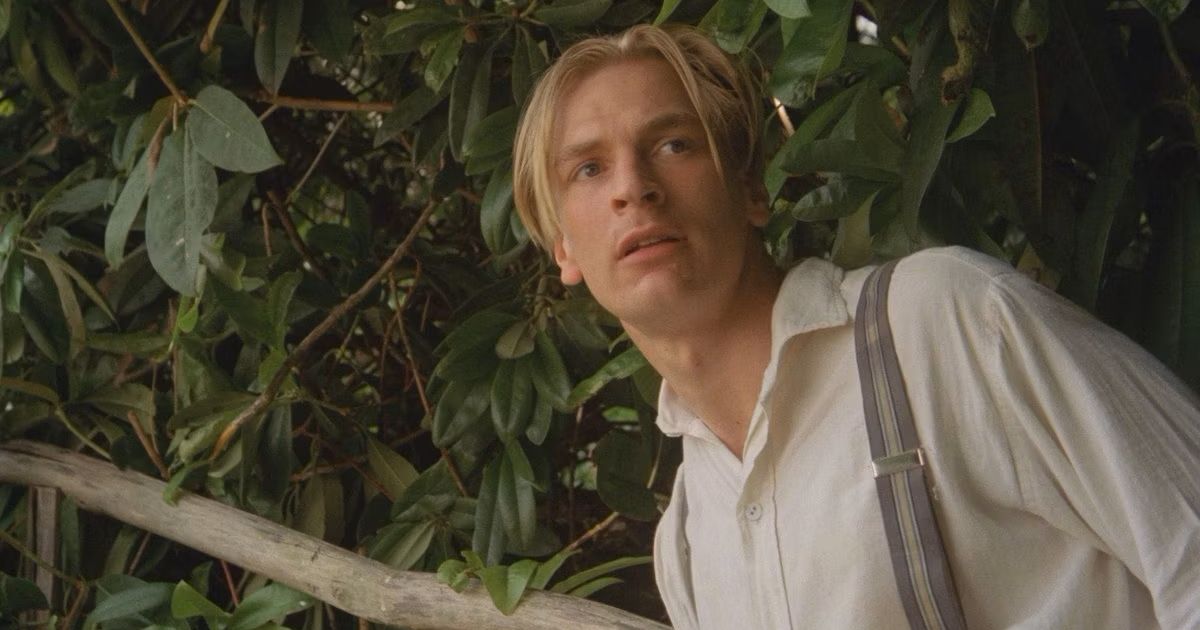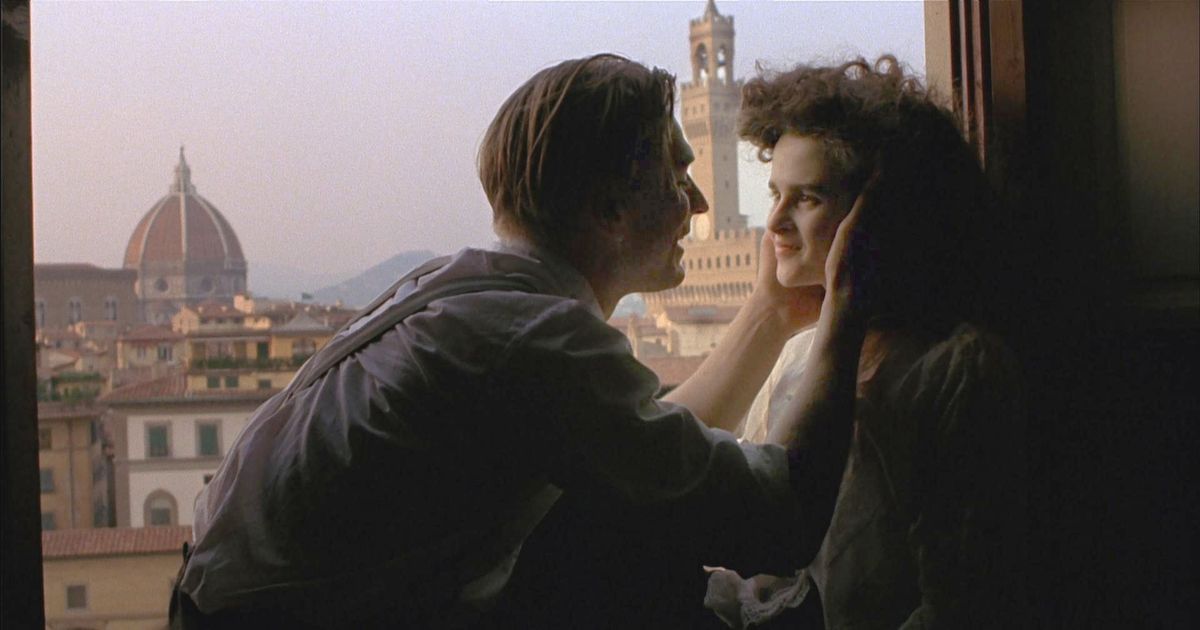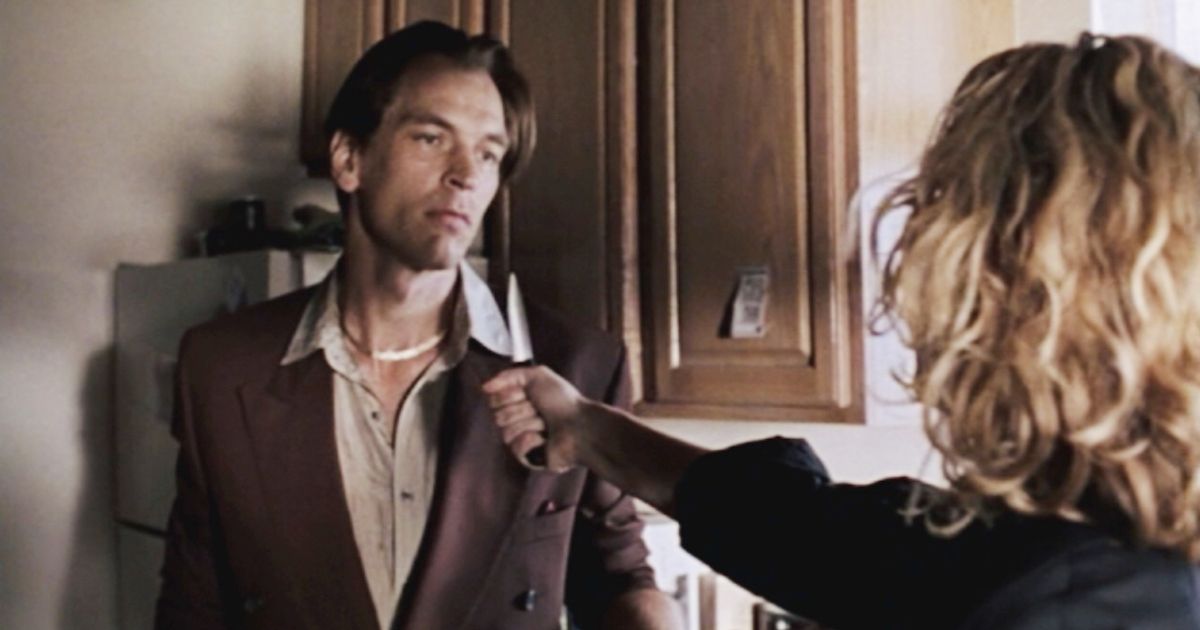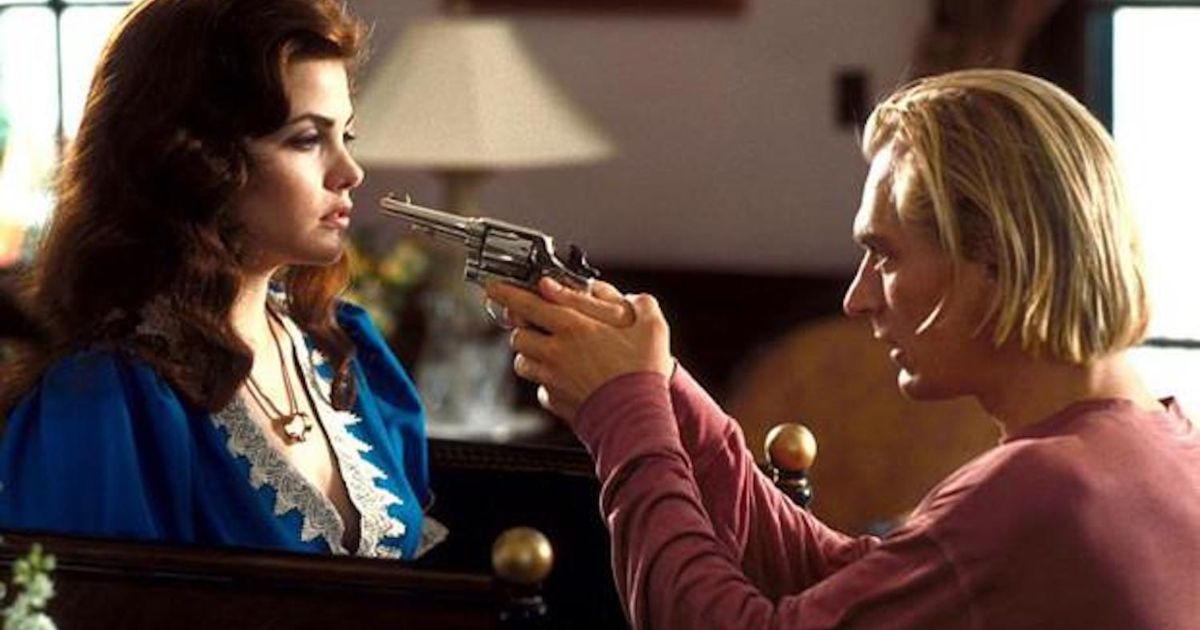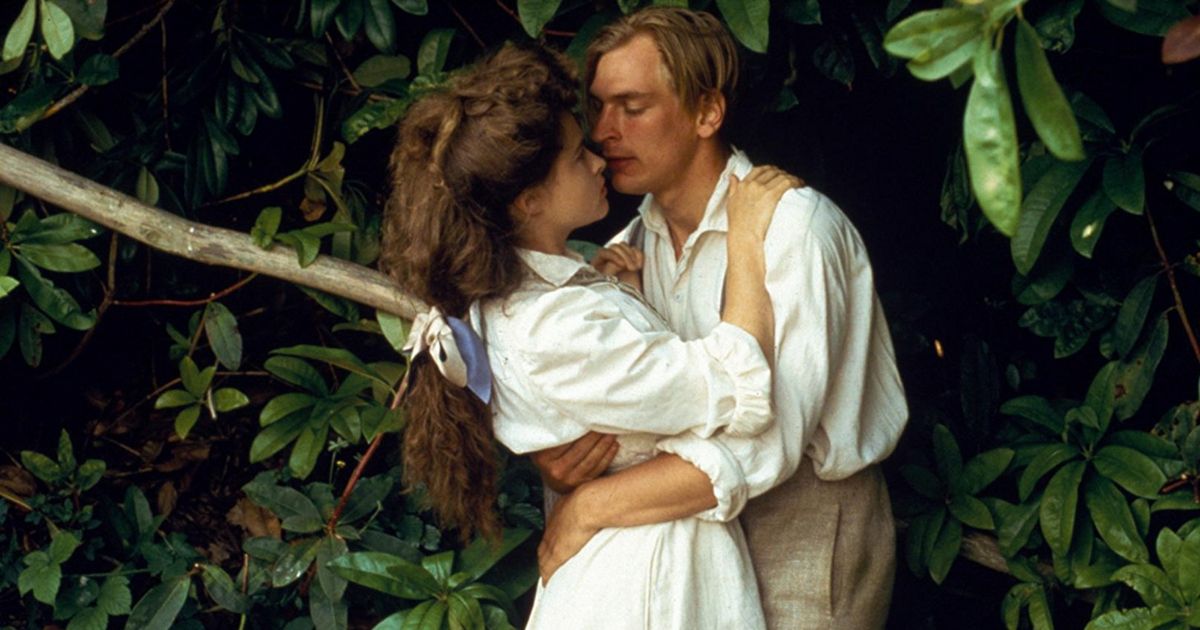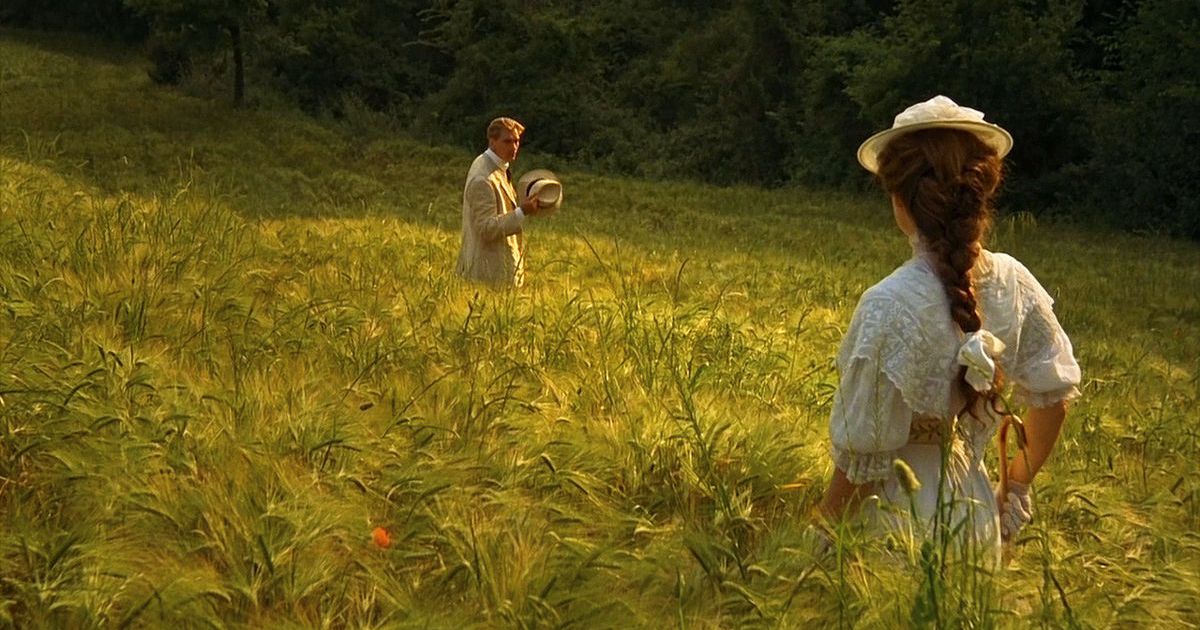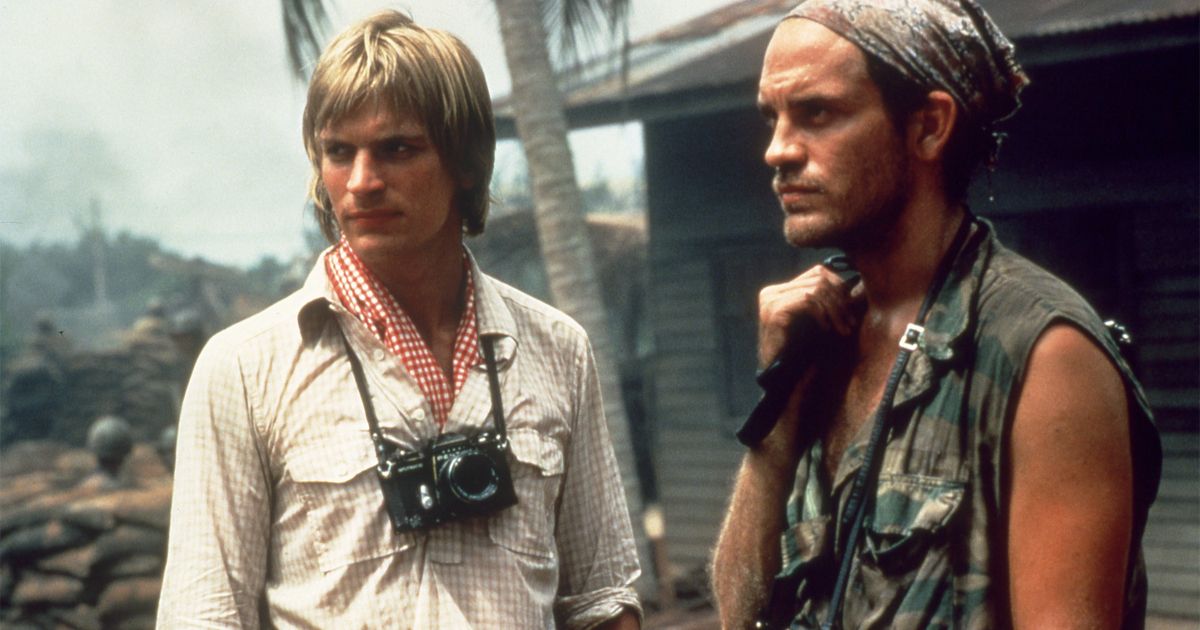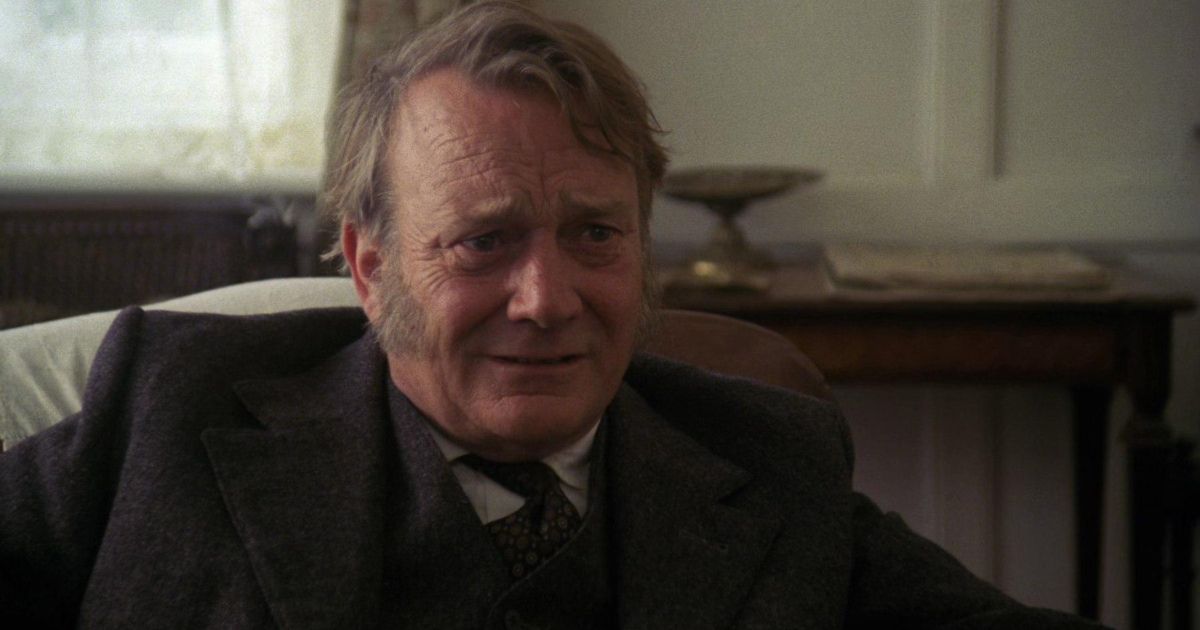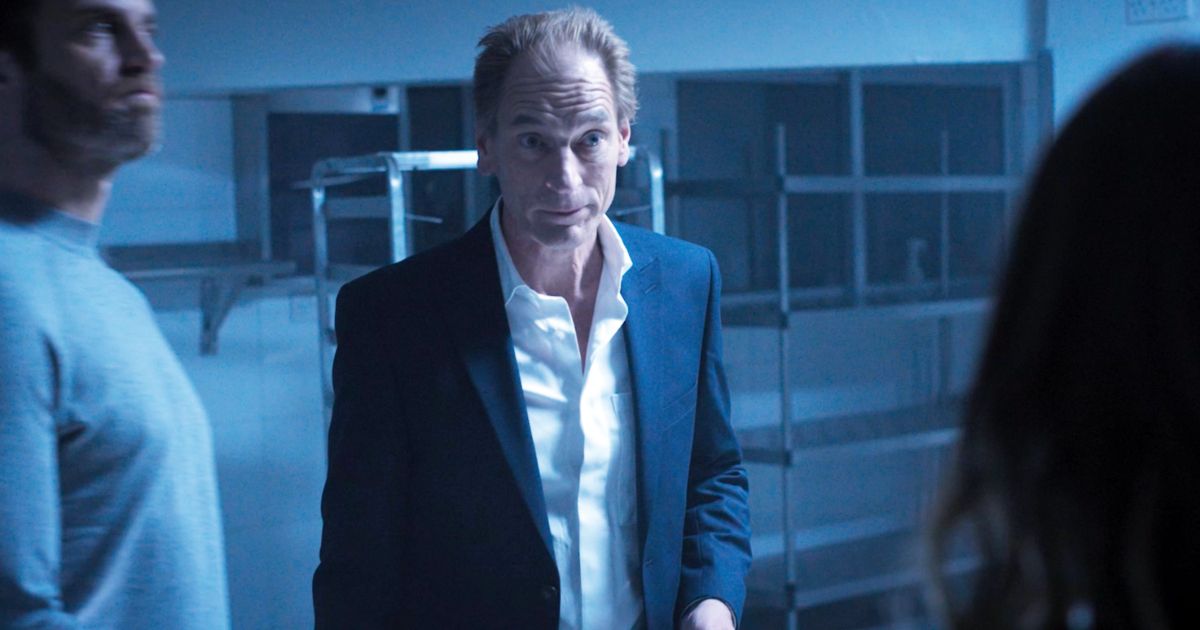In 1985, English director James Ivory and his Indian producer and life partner Ismail Merchant became a force to be reckoned with in Hollywood after their romantic comedy period piece A Room with a View became a breakout hit. Even before the good name of Merchant-Ivory Productions was established, the duo somehow nabbed one of the greatest ensemble casts ever assembled, including Helena Bonham Carter, Julian Sands, Maggie Smith, Daniel Day-Lewis, Judi Dench, Denholm Elliott, Rupert Graves, Simon Callow, and many other heavyweights from the British character actor scene.
As might be expected from that list of names, the film is filled to the brim with memorable and scene-stealing performances. Throughout the runtime of A Room with a View, it seems that each supporting actor is more perfectly cast in their role than the last. Nearly every role is given hilarious and endlessly quotable dialogue (A Room with a View is like The Big Lebowski of costume dramas), most of which screenwriter Ruth Prawer Jhabvala ripped right off the pages of E.M. Forster’s source novel of the same name from 1908.
Update June 8, 2023: This article has been updated by Valerie Parker with an update on Sands' tragic demise and his final performance.
There is, however, one key performance in A Room with a View that may not announce itself upon first viewing. With far fewer lines of dialogue to work with than the rest of the cast, it is quite literally a quieter performance. But, like the tortoise and the hare, it is a performance that ultimately lingers with the viewer long after the end credits have rolled. This is due to the actor’s natural physicality and uncommon free-spirited energy in a literary and film genre characterized by stifled emotions and antiquated classism. The performance in question is that of the late English actor Julian Sands.
Tragically, after months of speculation and worry, the actor has now been confirmed to have died while on a solo hike on Mt. Baldy in Southern California amid extreme winter weather conditions in January 2023. The actor left behind an impressive body of work, with A Room with a View being his best performance.
Julian Sands Stands Out in a Film Filled with Standout Performances
Sands played George Emerson in A Room with a View, the love interest of Helena Bonham Carter’s protagonist, Miss Lucy Honeychurch. Sands’ awkward, free-spirited character fits the real-life actor like a glove. While the same could be said about the rest of the cast, like Carter, Dench, Smith, Elliott, and Callow, these actors were able to repeatedly deliver on the same level throughout their careers. Though the greatest in this regard is unquestionably Day-Lewis.
Day-Lewis’ unwavering commitment to the ridiculously posh suitor Cecil Vyse makes for one of the funniest performances from any period piece. However, his all-too-human incarnation of Star Wars droid C-3PO in A Room with a View is but one brilliant star in a bright constellation of stunning performances, which include Bill the Butcher in Martin Scorsese’s Gangs of New York (2002), Daniel Plainview in Paul Thomas Anderson’s There Will Be Blood (2007), Abraham Lincoln in Stephen Spielberg’s Lincoln (2012) and too many more noteworthy roles to name.
Sands, however, was so naturally similar to his character in A Room with a View that his performance came across effortlessly on screen in a way that he'd never get to express again, in spite of some intriguing roles throughout the 1980s and 1990s in experimental films with a punk rock edge.
Julian Sands Built His Career Playing Supporting Roles in Cutting Edge Films
Sands looked back fondly at A Room with a View and was humbled in hindsight by his experiences making the film with that fantastic cast. However, speaking in The Eternal Yes, a behind-the-scenes documentary for the Criterion Collection Blu-ray release of A Room with a View, Sands said:
I suppose in some ways A Room With A View and E.M. Forster struck me as a little old-fashioned at the time. And although I was very happy to be considered for work and I loved the idea of going to Italy, I remember thinking it was not exactly a contemporary or cutting edge script.
It’s clear from the body of work that Sands left behind that his interest in “contemporary” and “cutting-edge scripts” guided his acting career in the 1980s and 1990s. After A Room with a View, Sands continued to play supporting roles like an entomologist in Frank Marshall’s Spielberg-produced spider horror Arachnophobia (1990) and a slimy playboy in David Cronenberg’s 1991 adaptation of William S. Burroughs’ controversial surrealist novel from 1959, Naked Lunch.
Perhaps the best of Sands’ side roles is in Leaving Las Vegas (1995), where he played an abusive pimp (is there any other kind?) with a bad-guy Latvian accent that registers in the untuned American ear instantly as Russian, much like Cate Blanchett’s diabolical Ukrainian accent in Indian Jones and the Kingdom of the Crystal Skull (2008). Of course, Sands’ role in Leaving Las Vegas was inevitably overshadowed by Nicolas Cage’s Oscar-winning central performance as a suicidal alcoholic, which, alongside his cartoon-come-to-life lead role in the Coen brothers’ 1987 groundbreaking romp Raising Arizona, is a career-best from one of Hollywood’s most eccentric movie stars.
Julian Sands Never Wanted to Be a Hollywood Star
With Sands’ beautiful blonde head of hair and broad chest (which in his prime could rival Adam Driver’s in Rian Johnson’s 2017 film Star Wars: The Last Jedi), it’s a wonder the handsome English actor was not cast as one of the many Fabio-like German henchmen in Die Hard (1988) or one of its many sequels. Had he been cast in Die Hard With A Vengeance (1995), Sands could have been a brilliant secondary villain under Jeremy Irons. However, this was all by design. Sitting down with The Guardian in 2018, Sands said:
I didn’t want to become a Hollywood actor. I was looking for something exotic, things that took me out of myself.
Perhaps even more exotic than any of Sands’ supporting roles was his lead role in Boxing Helena (1993), which was written and directed by Jennifer Chambers Lynch, daughter of David Lynch. The set-up of the film is something of a gender-reversed Misery (1990), with Sands playing a surgeon who holds the titular Helena (played by Sherilyn Fenn after both Madonna and Kim Basinger dropped out) captive by amputating her limbs after she is injured in a car accident outside his home. Boxing Helena proved divisive among critics and was doomed at the box office after it received an NC-17 rating, the MPAA’s kiss of death.
A Room with a View Stands Out from the Rest of Julian Sands’ Career
Needless to say, abrasive films like Naked Lunch and Boxing Helena are a far cry from the serene beauty of A Room with a View which washes over its viewers like a live-action adaptation of a Hayao Miyazaki anime film. (Incidentally, Day-Lewis’ wooden body movements and posh accent feels unmistakably like a comedic relief anime butler come to life.) While an “old-fashioned” Forster adaptation did not initially scratch the young actor’s punk rock itch, speaking in the same Criterion documentary, Sands said:
But I liked [my] character, I liked the romance, and I liked the sort of quietly subversive intelligence and humor that George Emerson brought to the piece.
That “subversive intelligence” that Sands rightfully ascribed to the fictional George Emerson is a trait that could equally be attributed to the late actor himself. His own “subversive intelligence” is the very thing that made Forster’s character the role that Julian Sands was born to play.
Julian Sands Does a Lot with Little Dialogue in A Room with a View
Early in the film, Helena Bonham Carter’s character makes the valid point that Sands’ character “never talks.” After being asked at a Q&A and revival screening of the film at the TCM Film Festival in 2013 about whether he was nervous about playing a character with so little dialogue, Sands quipped to a laughing audience:
No, I was relieved. Really, that I didn’t have too much to say. It meant I could stay up very late at night without having to fret. Without risking the wrath of Maggie Smith for not learning my lines.
On nights after the day's shooting was complete, Sands was relatively free from the grind of memorizing his lines of dialogue since they were few and far between for his character in Jhabvala’s screenplay, much like in Forster’s novel. But the actor apparently found even more free time for himself on nights with his name on the next morning’s call sheet as, speaking in the same Criterion documentary, Sands said:
I’m not even sure I ever read the whole script. I would just flick the pages to my scenes.
While Sands did not explicitly say as much, it seems a safe bet that he also did not read the entirety of Forster’s novel. This all sounds suspiciously like Sands believed he could play the part in his sleep or, more accurately, without any sleep. Ironically, this is probably not too far from the truth as the young actor already embodied one of the most crucial elements of the character long before he had ever been handed Jhabvala’s script. Commenting on his physical embodiment of the role at that same Q&A, Sands said:
What Ivory understood and Jhabvala understood was that the power of [A Room With A View] was in what the camera saw, as much as what characters said to each other. So some of the most beautiful moments were moments which didn’t require speech. What was there to say in the scene in the cornflower field where [Carter and I] embrace? Or in certain scenes around [Tuscany]? They are iconic and complex without the need for linguistic explanation.
Jack Nicholson’s browline gives him a naturally malevolent look to match his Hollywood wildman mythos and villainous roles in films like Stanley Kubrick’s The Shining (1980) and The Joker in Tim Burton’s Batman (1989). Mickey Rourke has a boulder where his face should be, making him instantly believable to viewers as an aged heavyweight champion in Darren Aronofsky’s The Wrestler (2008). Like Nicholson and Rourke, Sands has an evocative and distinct facial feature: a prominent jawline that formed a mischievous smirk like Lewis Carroll’s Cheshire Cat from Alice’s Adventures in Wonderland (1865). That smirk is permanently plastered to the actor’s face. From the very first shot of Sands in A Room with a View, his natural smirk immediately signals to the viewer that there is boyish mischief brewing within the quiet George Emerson.
Julian Sands Identified with the Wild Side of a Real-Life Journalist He Played
Before he was cast in A Room with a View, Sands played the supporting role of real-life British journalist Jon Swain in Roland Joffé’s biographical film The Killing Fields (1984), which is set in 1970s Cambodia and concerns the atrocities committed by Pol Pot’s Khmer Rouge regime. Speaking to The Guardian in 2014, Sands said:
I’d been cautioned by [Joffé] to keep my distance from [Swain] because he was an unstable character. And [Swain] had been told by [Joffé] to stay away from me, because I was a refined, sensible person who didn’t want to be distracted. In fact, [Swain and I] bonded instantly. We were always quoting and misquoting [Harold] Pinter to one another.
Sands’ playful behavior in pre-production on The Killing Fields is unmistakably similar to his free-spirited character in A Room with a View. His playful quoting of an English playwright like Pinter would make his character’s father proud.
The Father-Son Relationship Between Sands and Denholm Elliott
Aside from the film’s love triangle, another key relationship in A Room With A View is that of George Emerson and his father. The role of Mr. Emerson was played brilliantly by Denholm Elliott, who is most famous for his portrayal of Marcus Brody, the bumbling academic and occasional sidekick to Indiana Jones in Raiders of the Lost Ark and The Last Crusade (1989). A Room with a View gave Elliott the chance to bumble, croak, and steal even more scenes than he does in the Indiana Jones films, earning him a Best Supporting Actor nomination which he ultimately lost to Michael Caine for Woody Allen’s Hannah and Her Sisters (1986).
Elliott’s character, Mr. Emerson, is something of an early 1900s hippie, a freethinker who clings to his anti-Victorian establishment books (not to be confused with the film’s Edwardian time period) by the likes of Alfred Edward Housman and Samuel Butler. Mr. Emerson’s wardrobe bears an inscription that reads like a George Carlin quote: “Mistrust all enterprises which require new clothes.” At the end of the film, Mr. Emerson is moving out of his quaint English villa. His bags are almost all packed up when he stops George from stowing away a copy of his book by American transcendentalist Henry David Thoreau, telling his son "Leave Thoreau. I need him by me now."
Speaking in the same Criterion documentary about his character and the paternal relationship central to A Room with a View, Sands said:
What I felt about George Emerson was that he had this wonderfully loving, permissive father [Mr. Emerson] who gave him the freedom of the hills, if you like, to be himself. So that was great information to have from the script and the book. George himself was clearly a character still looking to resolve just who that self was. I liked very much George’s being perplexed by the nature of the world around him. I liked that he was on a journey, not fully formed. And as a young actor that pretty well describes who we are. I felt, in Forster’s words, I could connect to him without too much difficulty.
Tragically, when Sands passed away on Mt. Baldy at the age of 65 years old, only a couple of years older than Elliott was at the time of portraying his father in A Room with a View, however, through the insect-in-amber magic of celluloid, Sands will live on, “saying his creed” from the tops of Italian trees; what Mr. Emerson calls, “The Eternal Yes.” With every rewatch after his passing, fans of A Room with a View will feel a slight sting watching the rain turn Julian Sands’ golden hair to dirty blonde as he runs all alone down the foothills of Tuscany, smirking all the way.
Sands Final Performance Reunited Him with Longtime Friend John Malkovich
The final role Julian Sands portrayed before his untimely death was in the film Seneca: On The Creation of Earthquakes, released on March 23, 2023. The film marked the sixth Sands and Malkovich made together, including 1984's critically acclaimed The Killing Fields, where the duo met and formed a close bond. Malkovich was a godfather to Sands' eldest child and introduced Sands to his second wife. Based on the relationship between the Roman philosopher Seneca and the despotic Emperor Nero, the film features a scene that feels rather poignant and prophetic in light of Sands' tragic demise, where Seneca gives a speech about death to a crowd that includes Rufus, the character Sands portrayed.
Remind yourselves: we die every day. Death is stalking us everywhere, so it’s useless to fear or dread it.
By all accounts, Sands was an experienced mountaineer and hiker who was often known to trek to far-flung fields such as Antarctica or the Andes and had been through hairy experiences before and survived. Julian Sands spent his childhood wandering the moors of Yorkshire and died exploring one of the wild landscapes he enjoyed so much.

